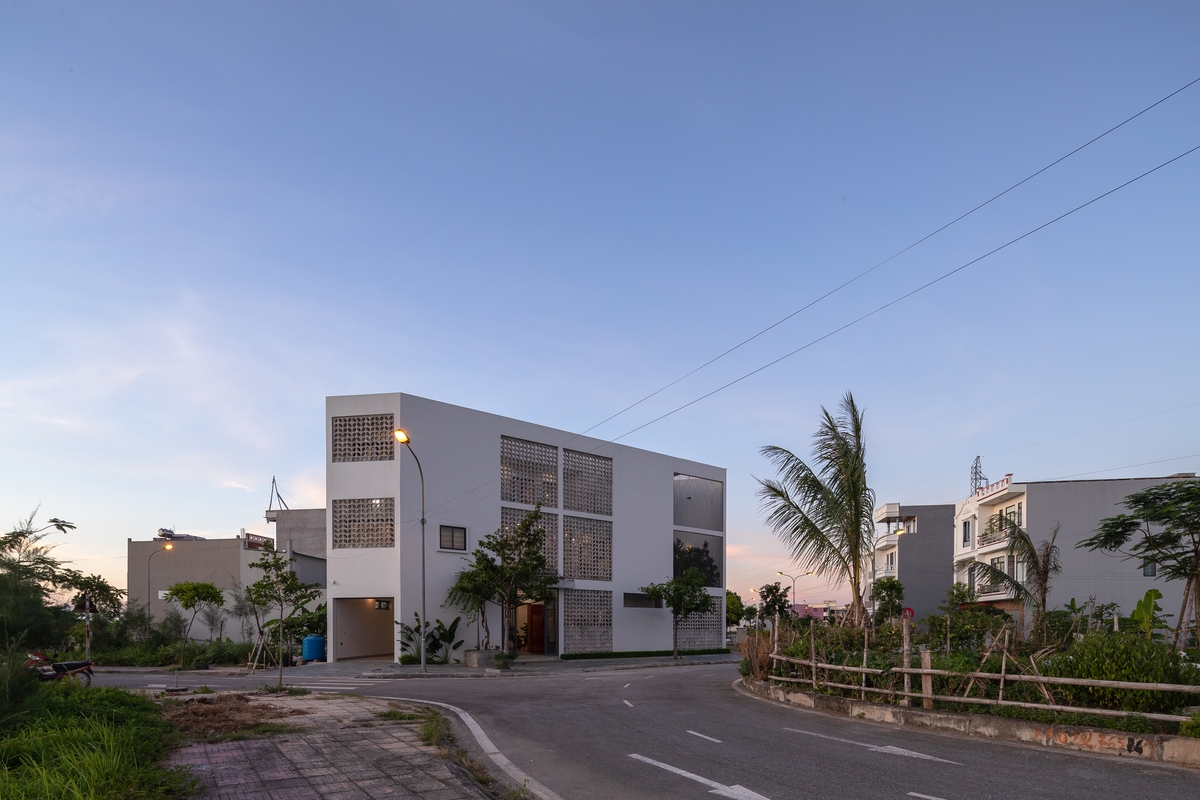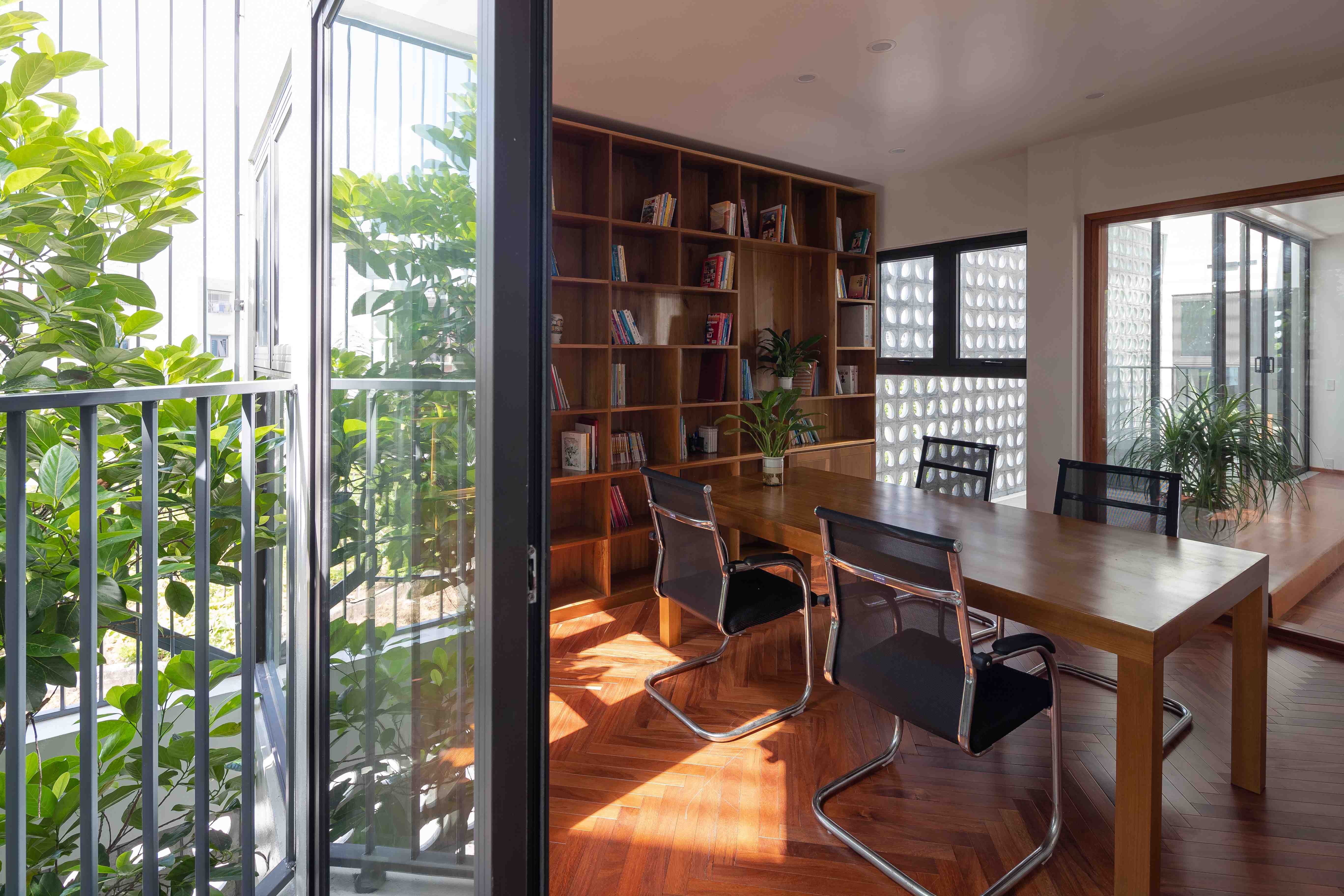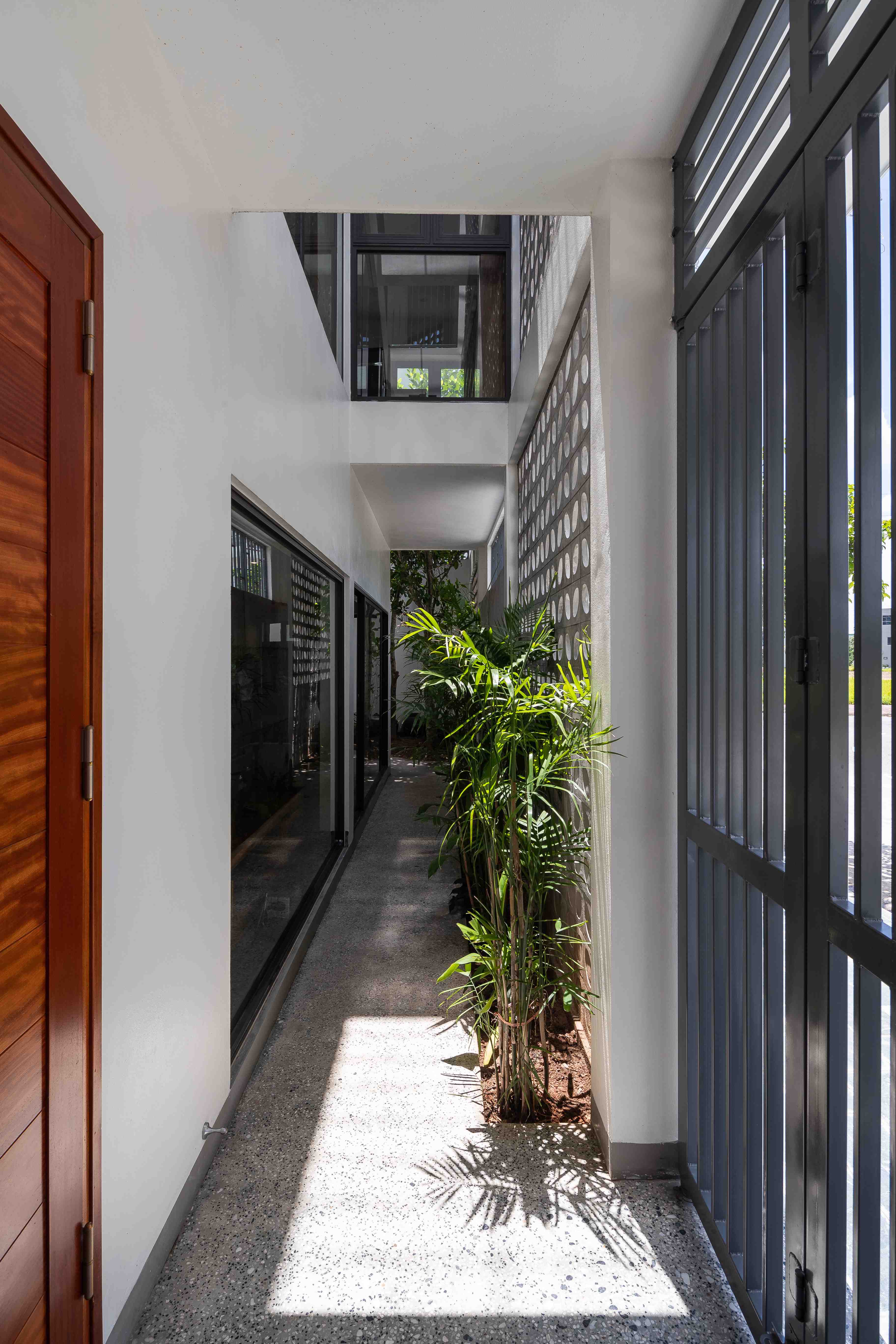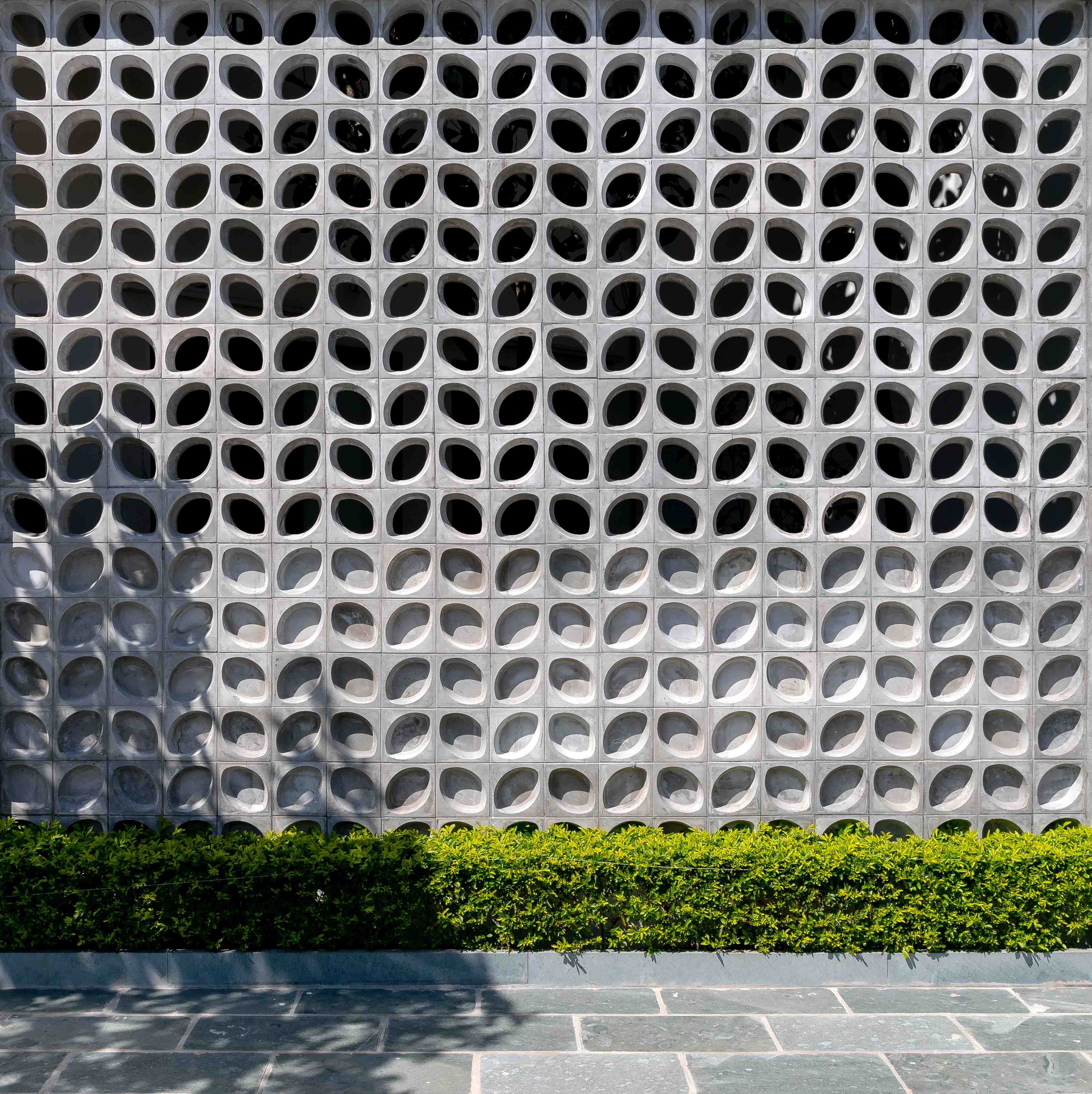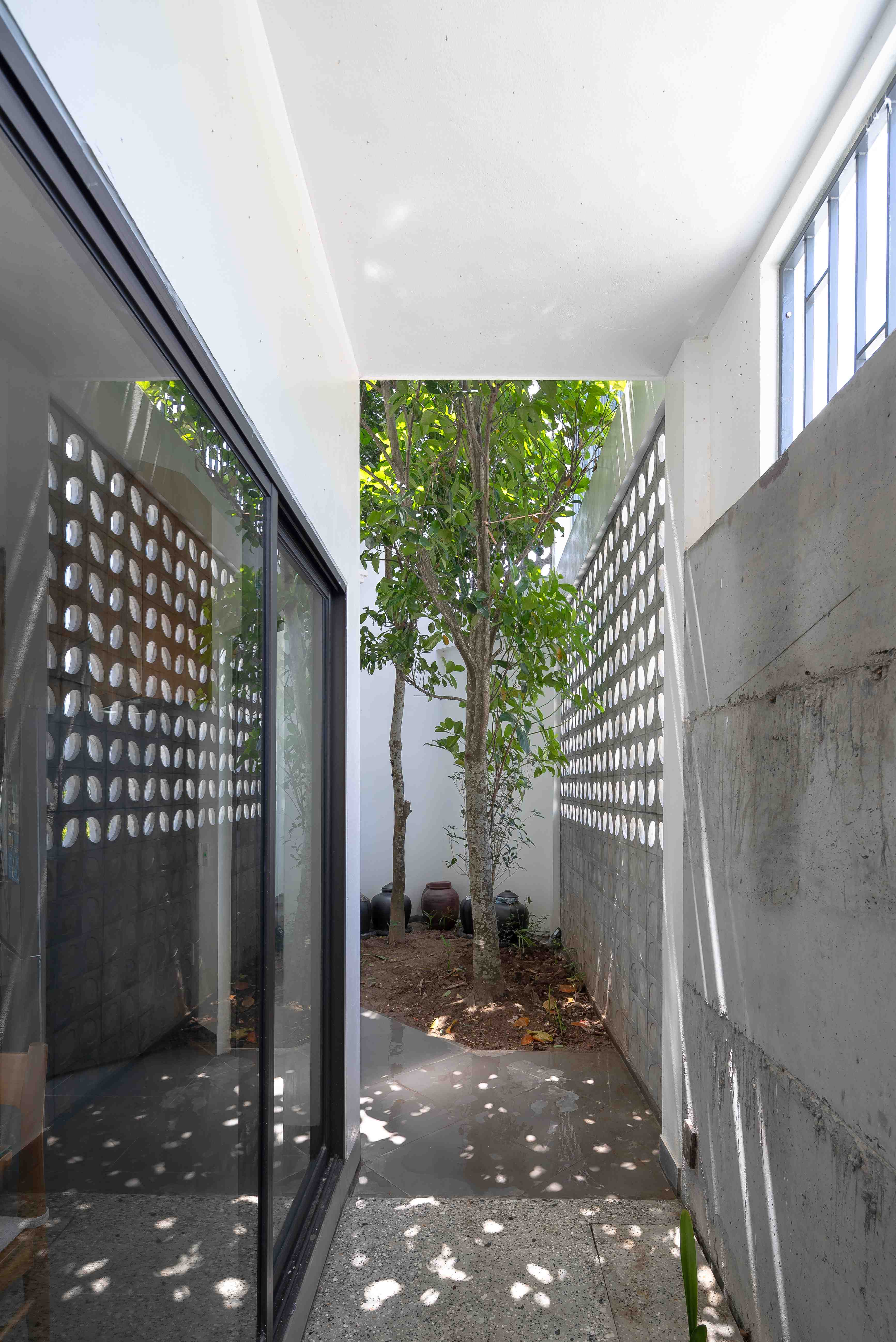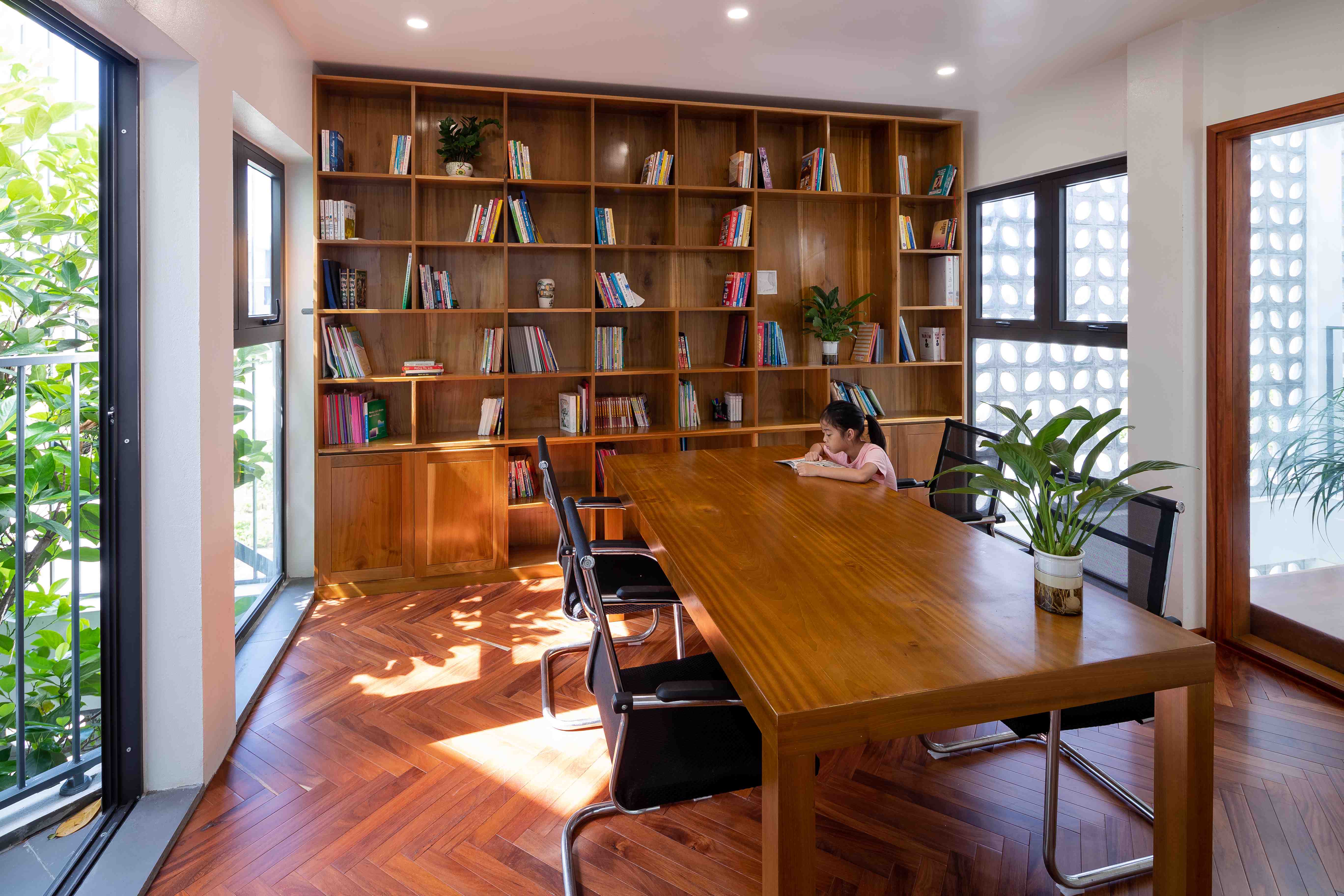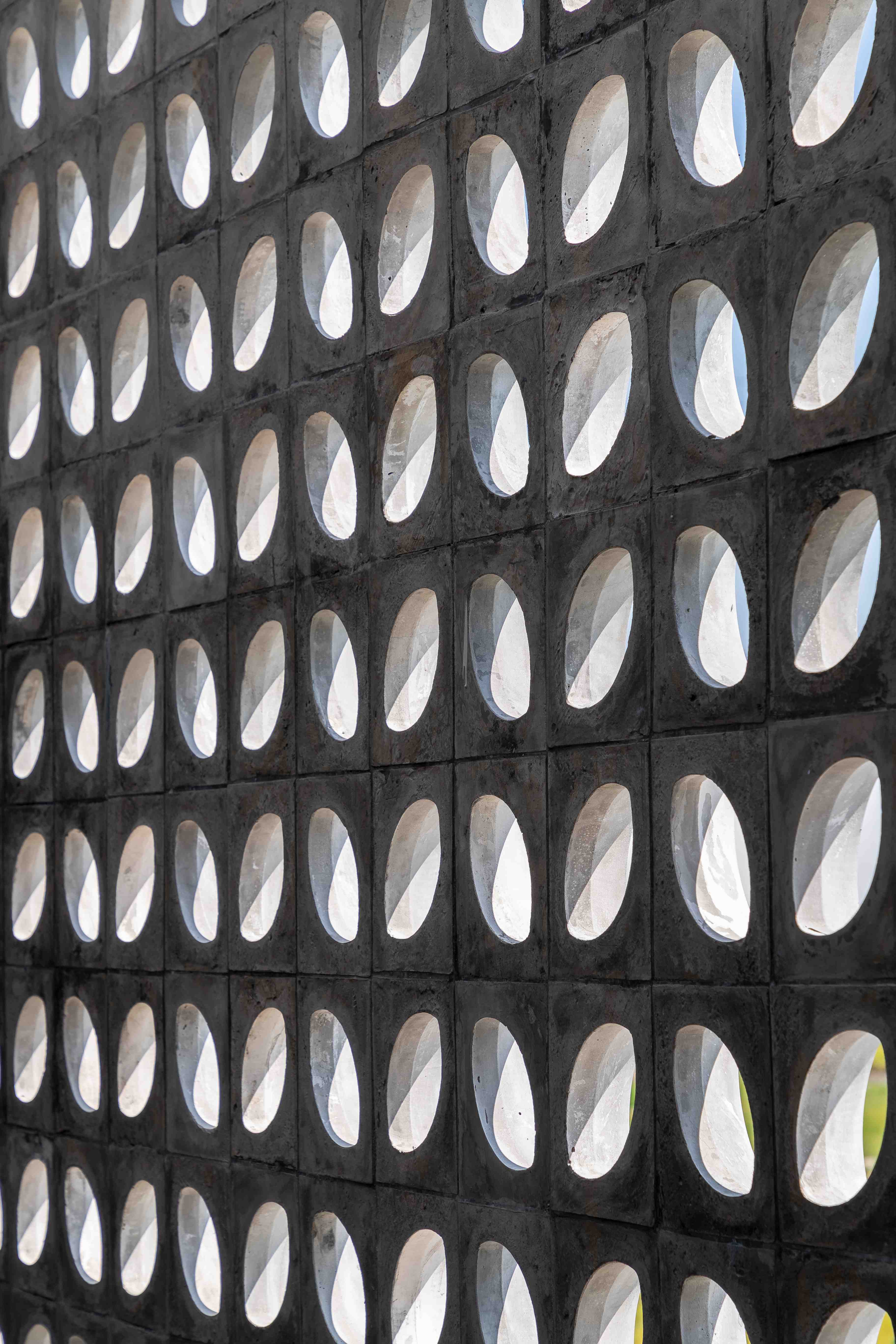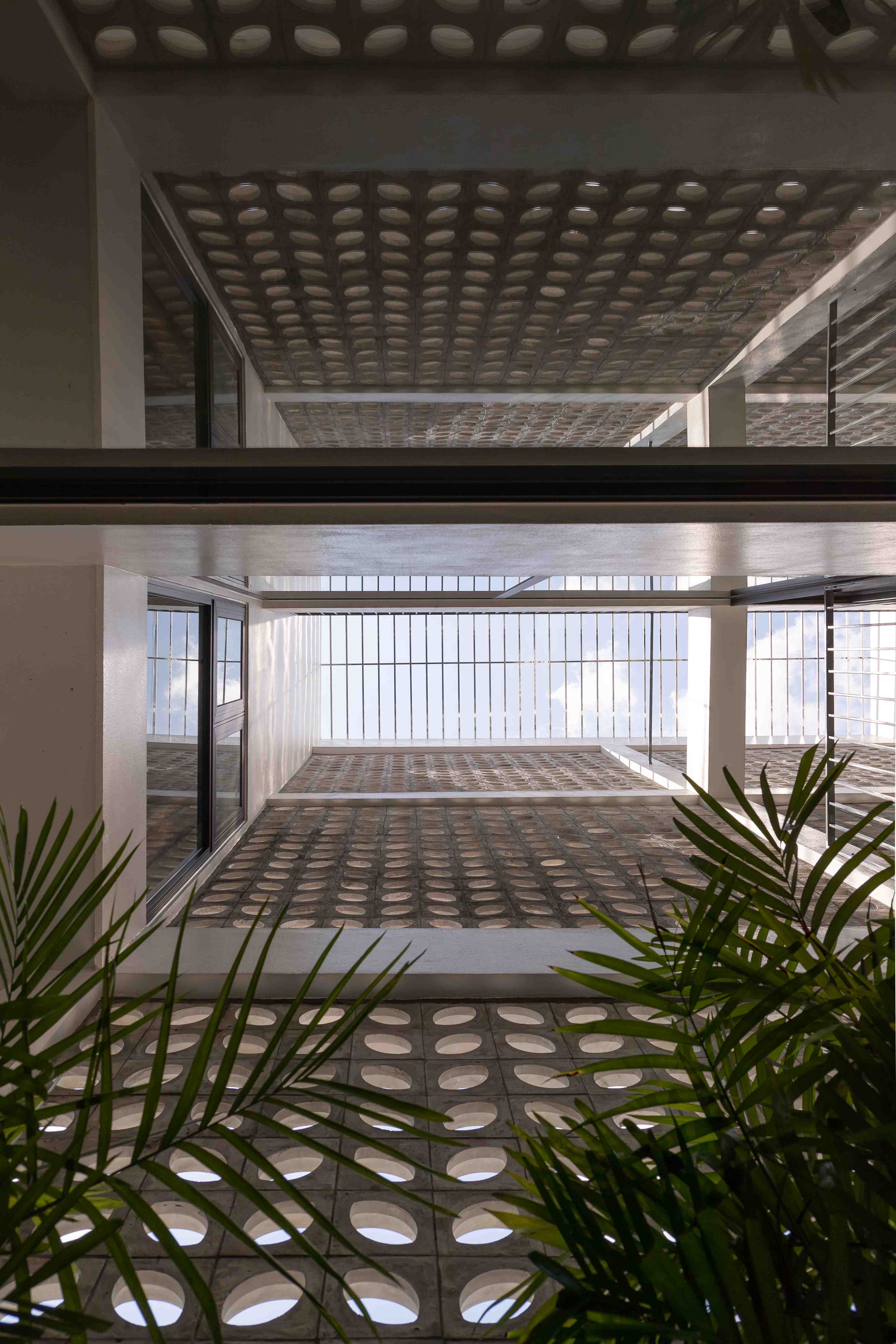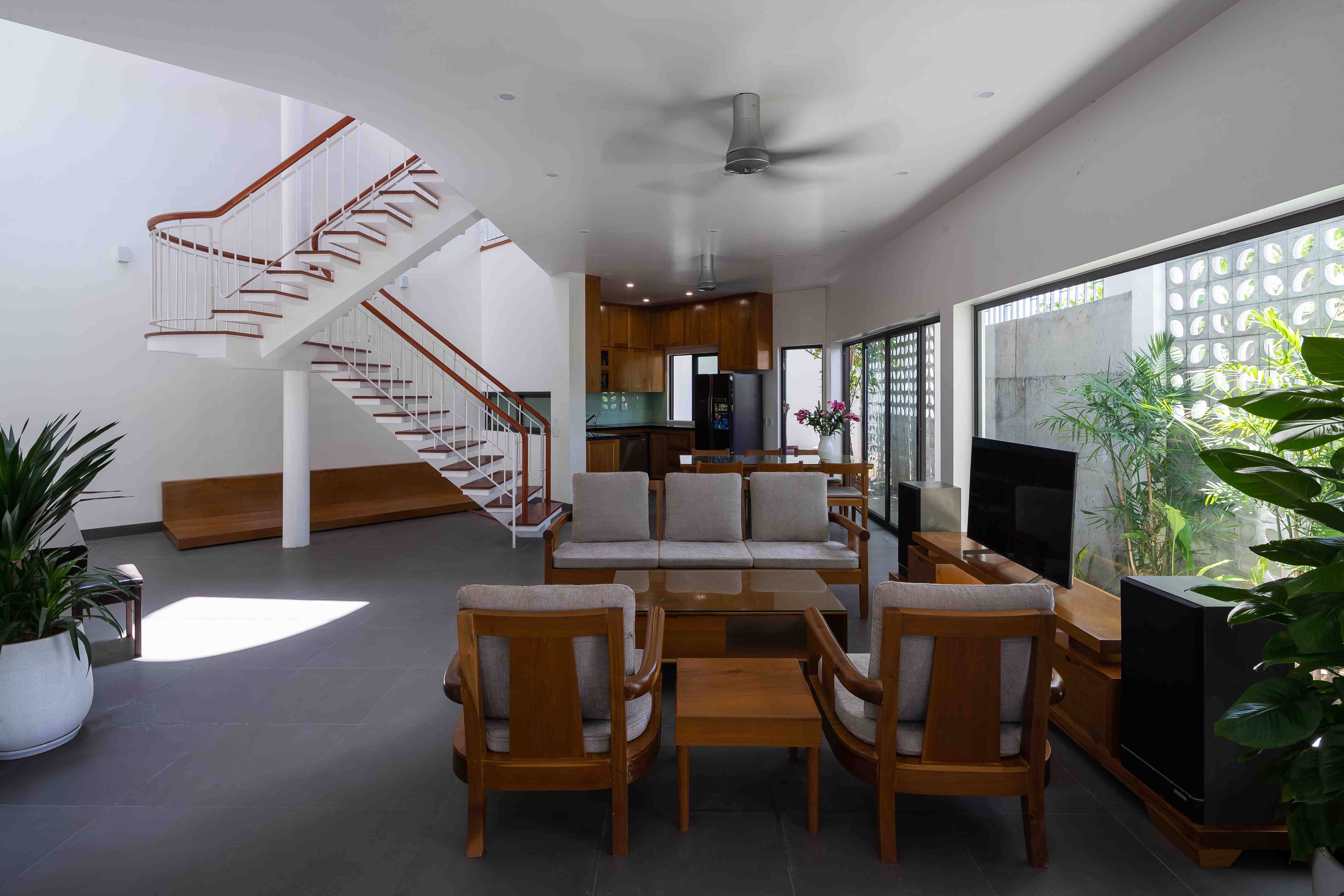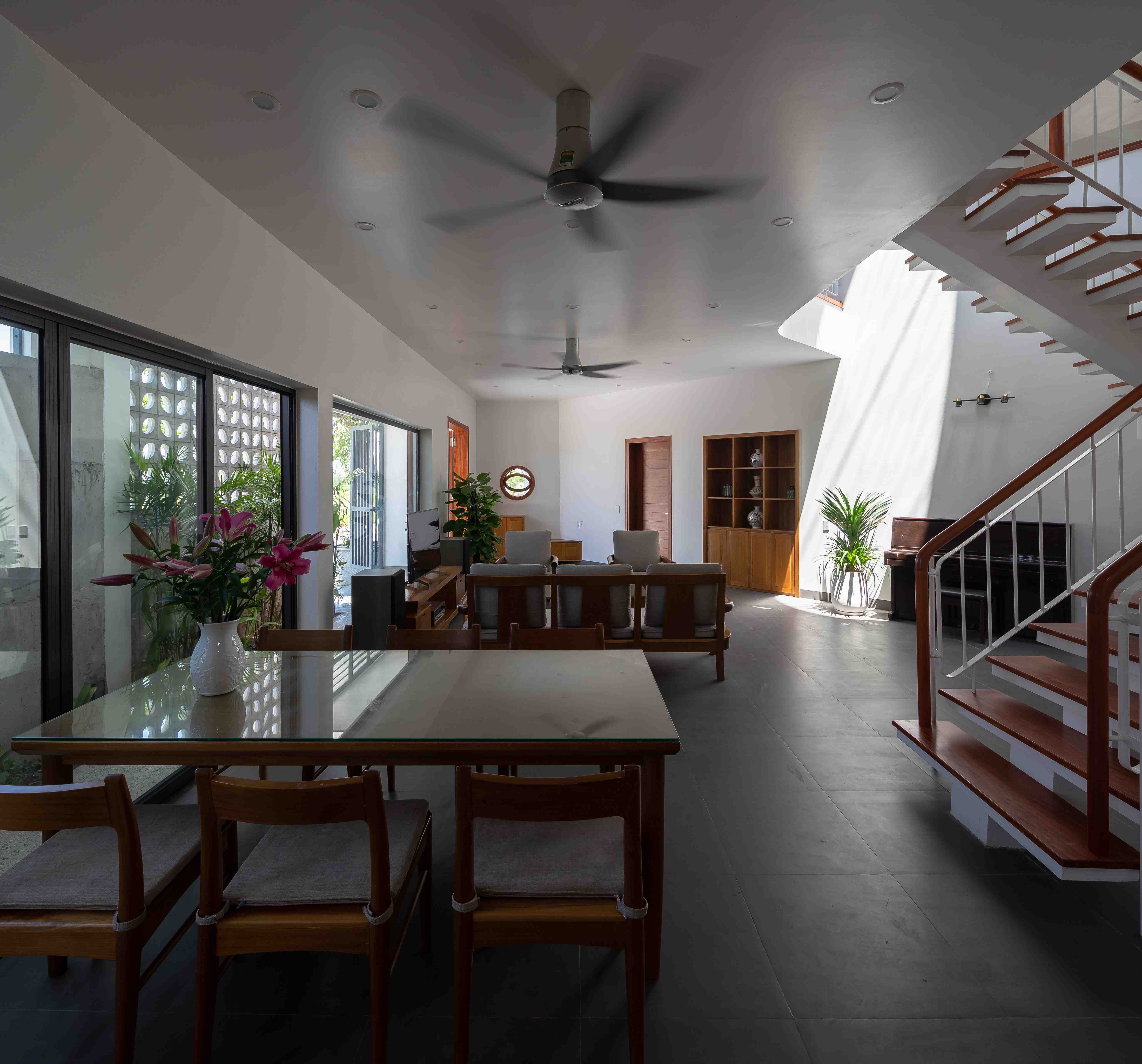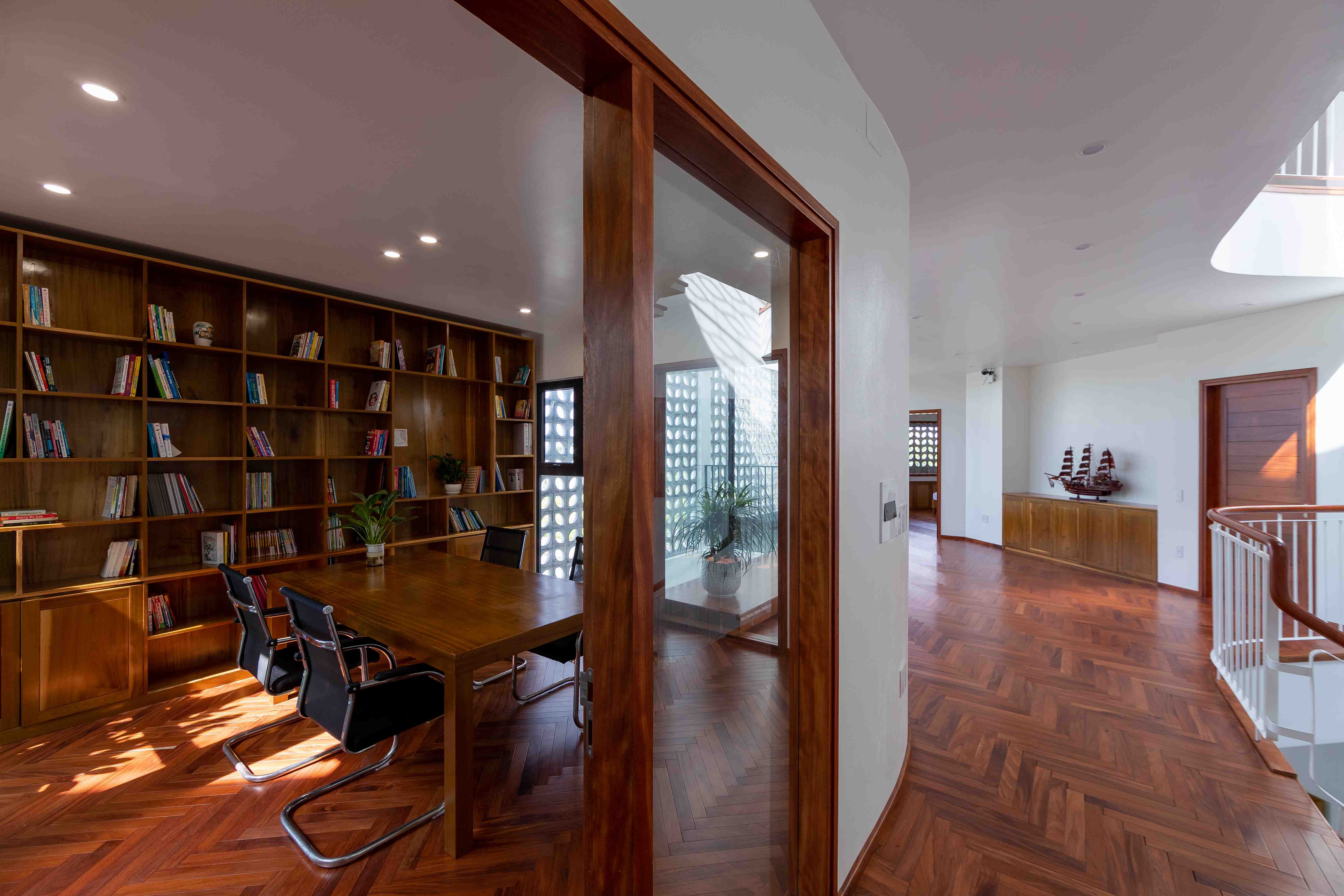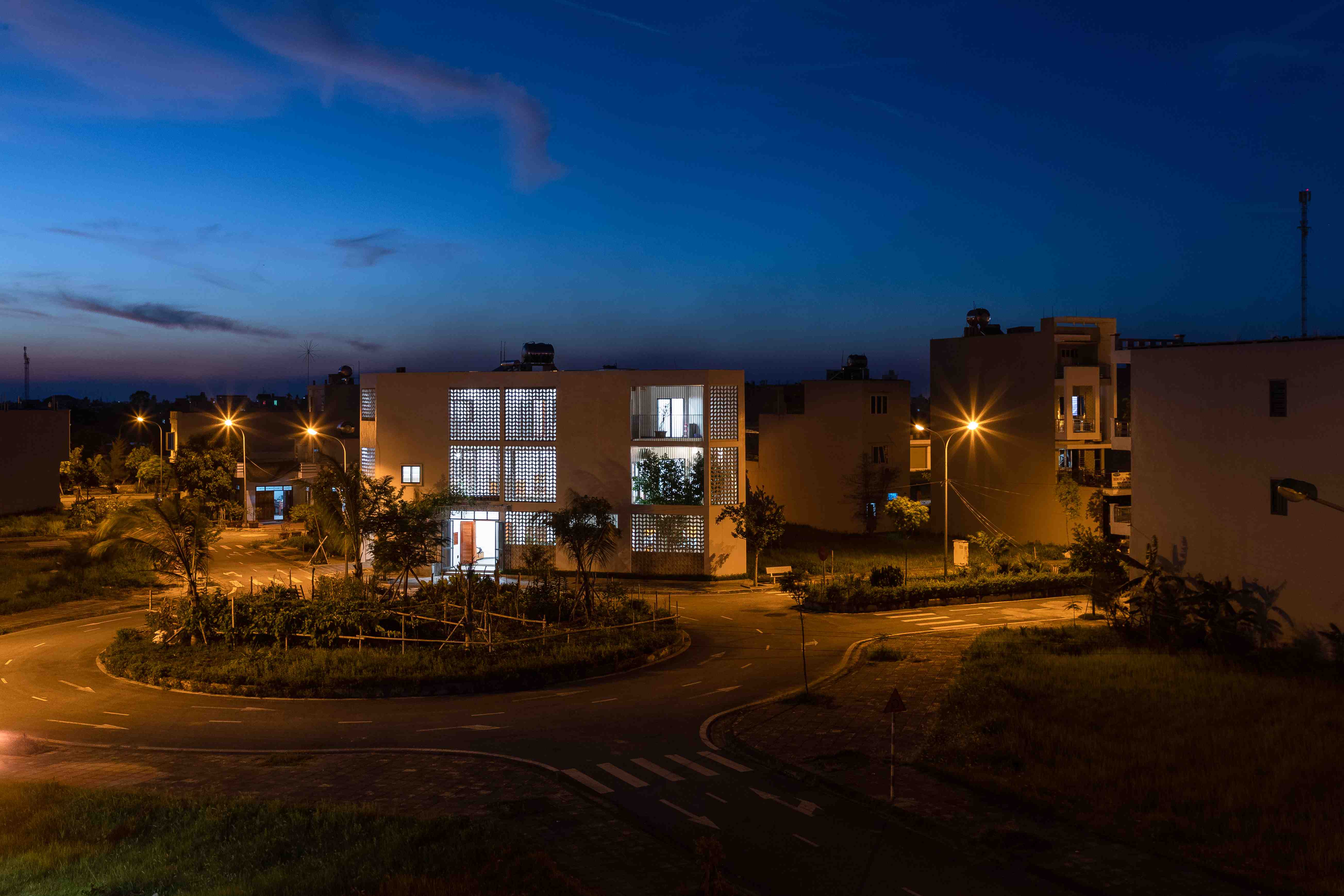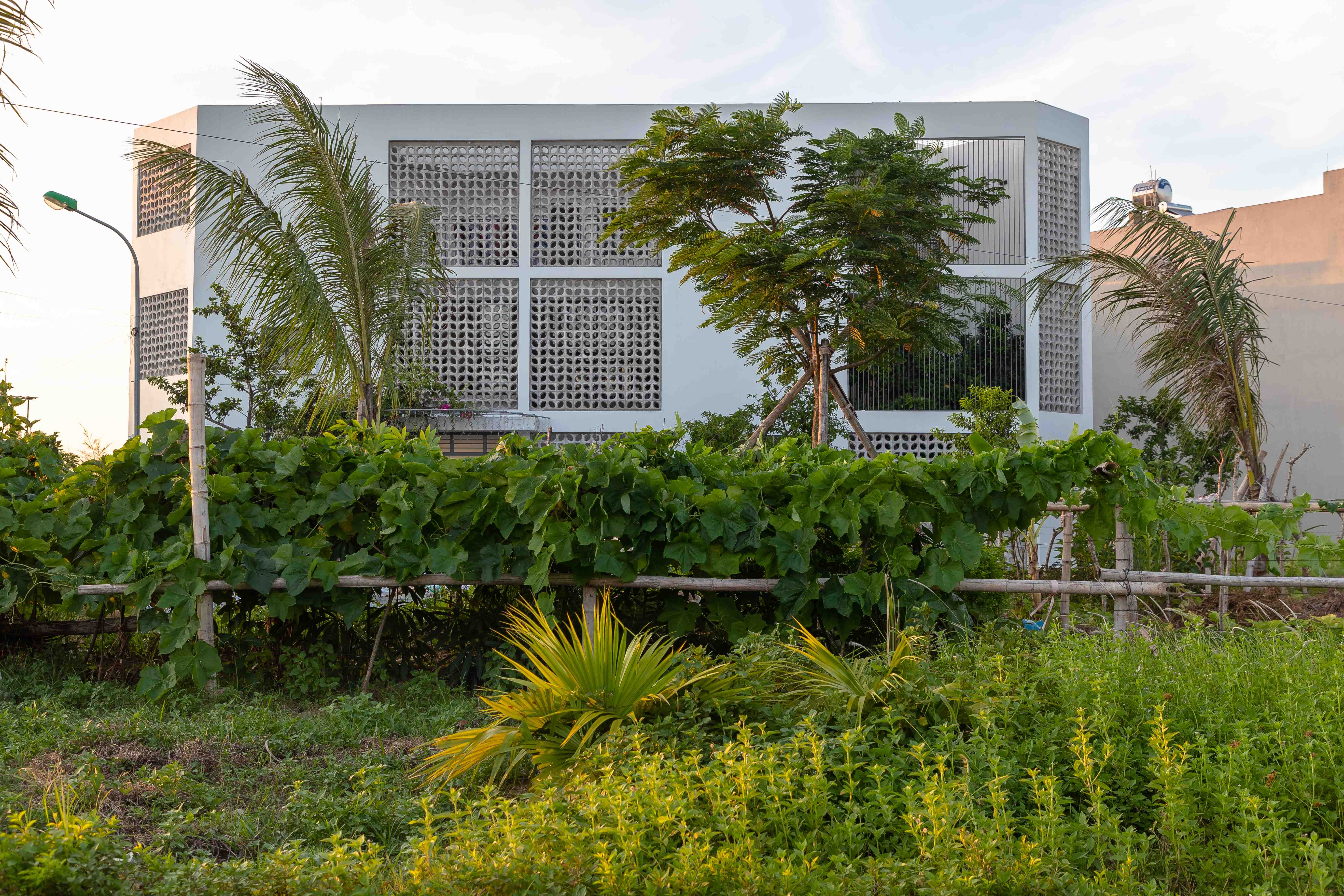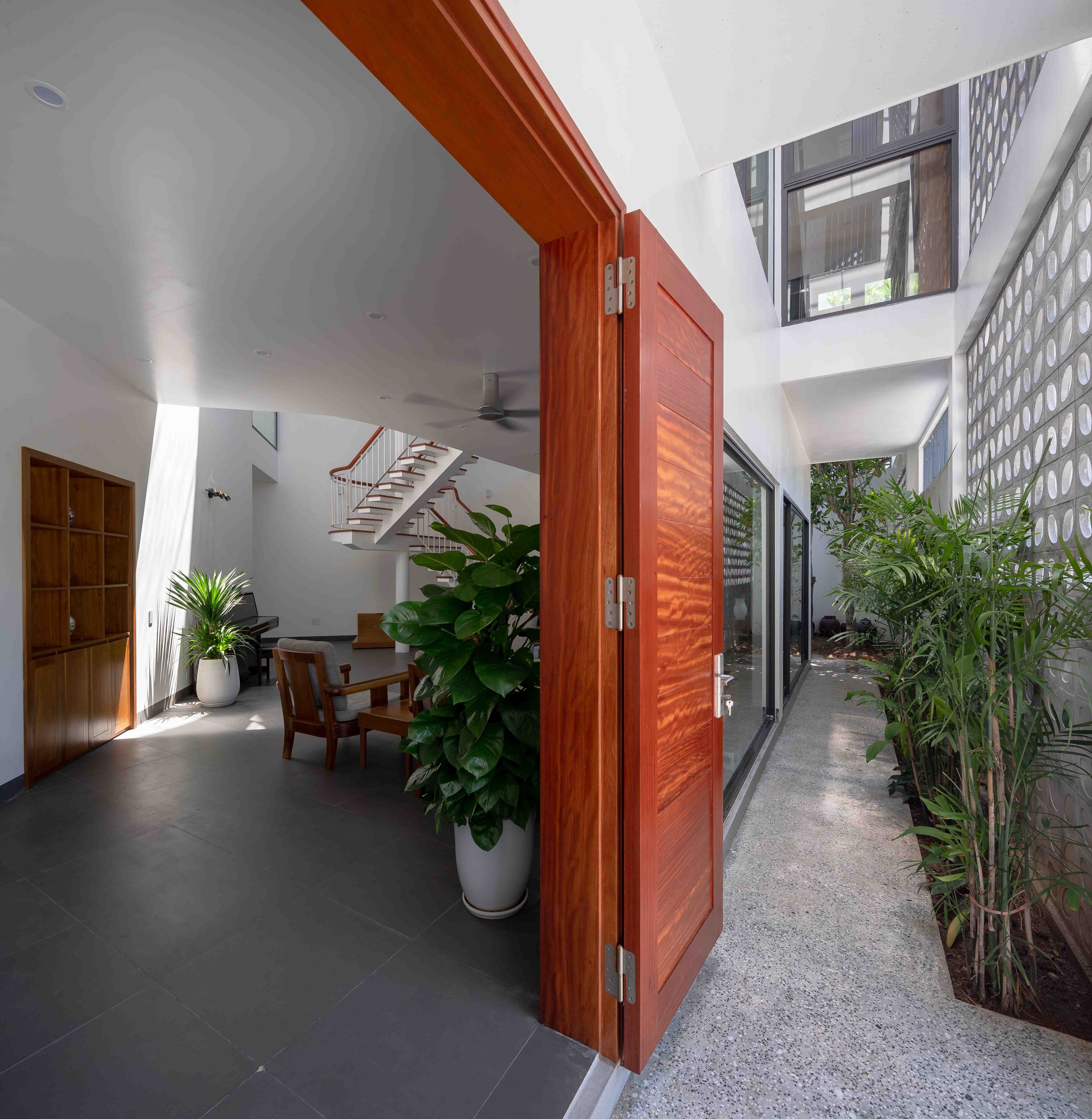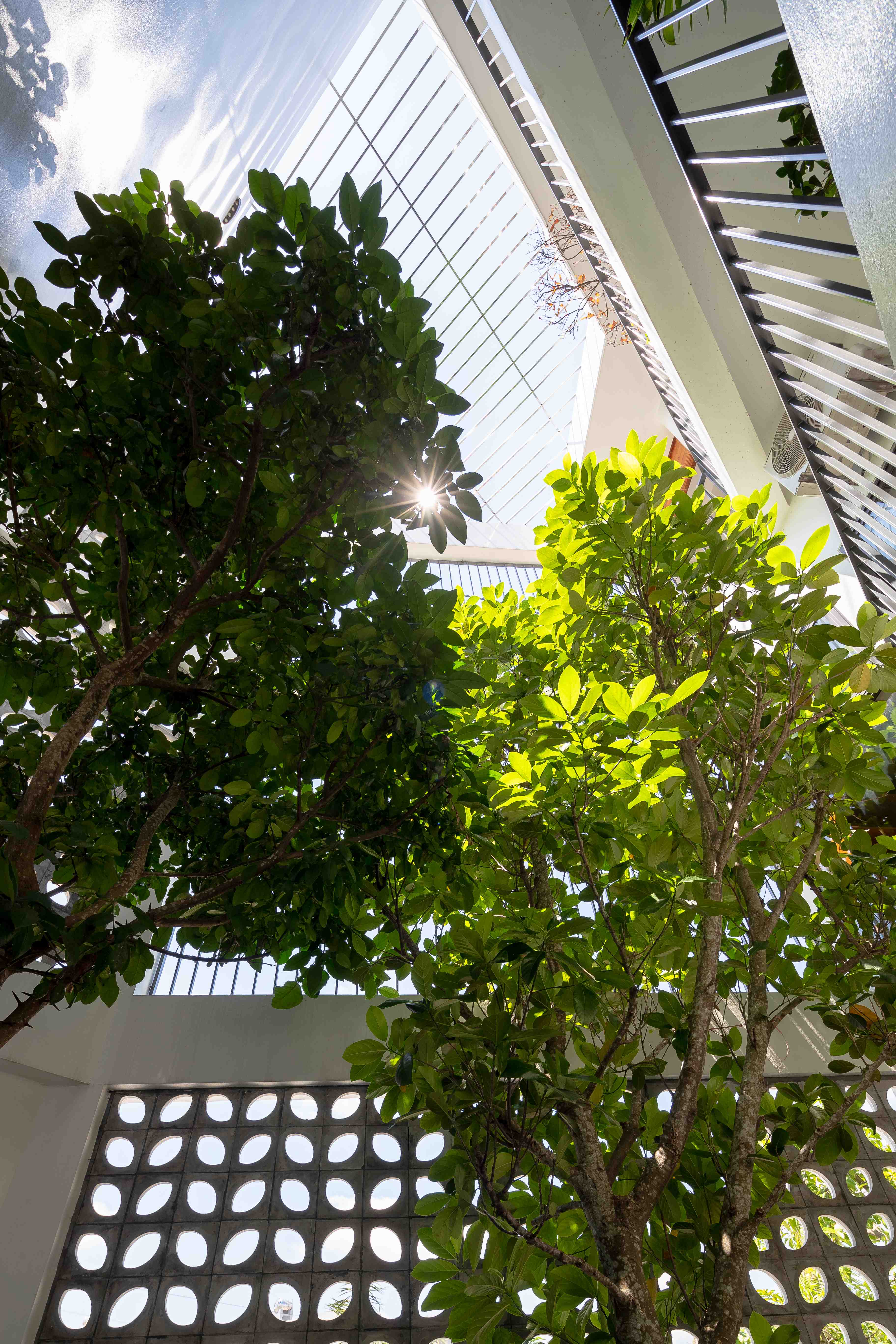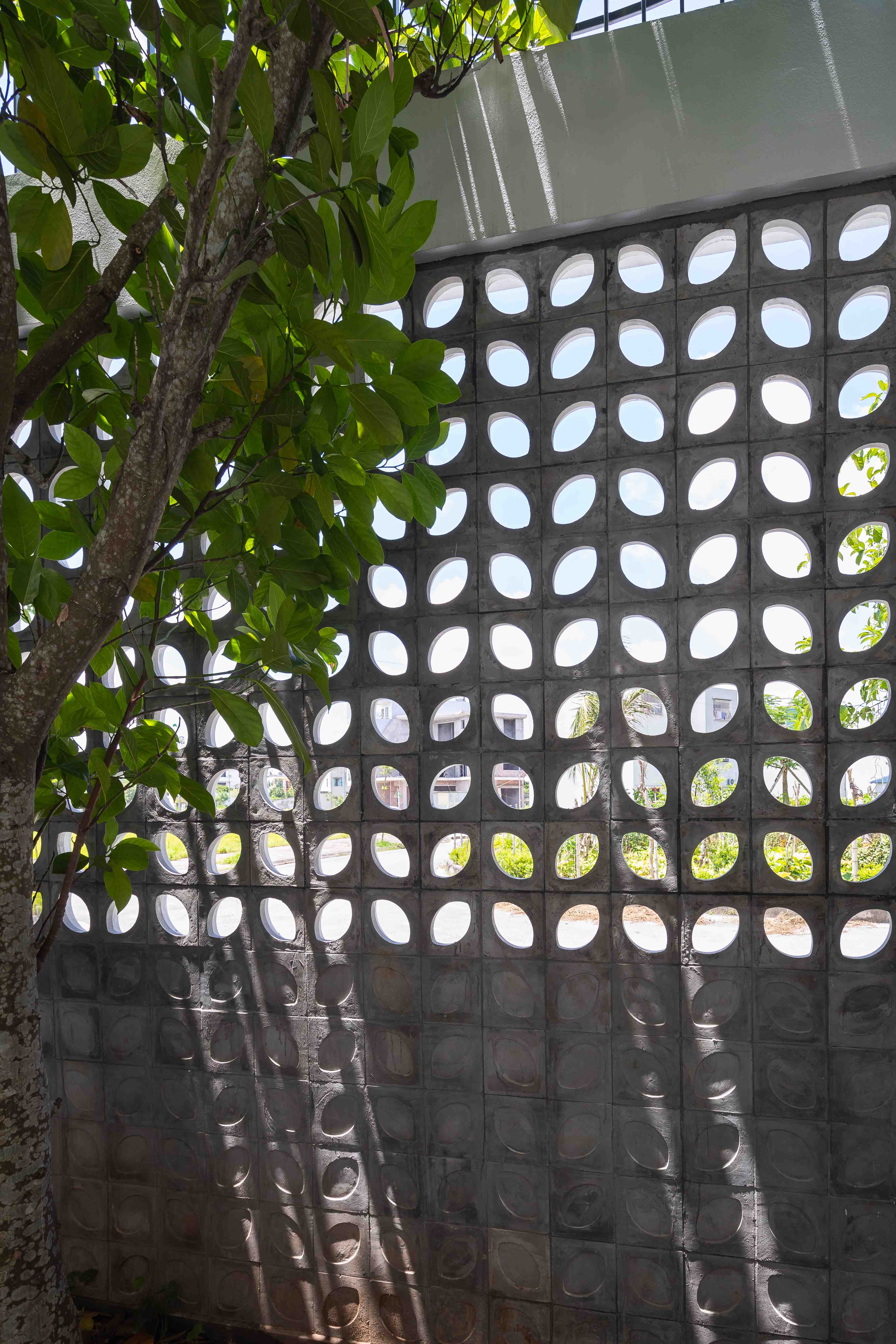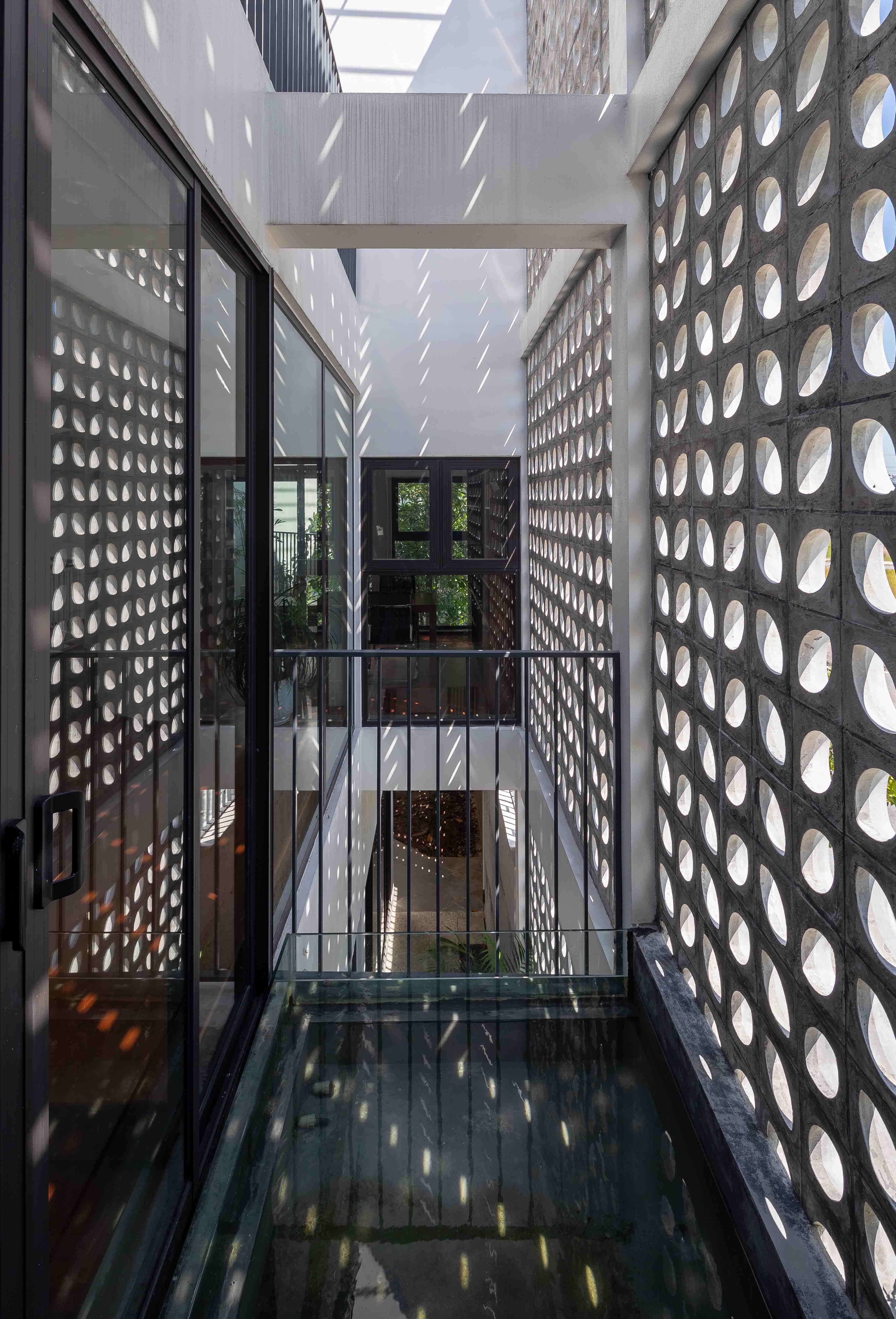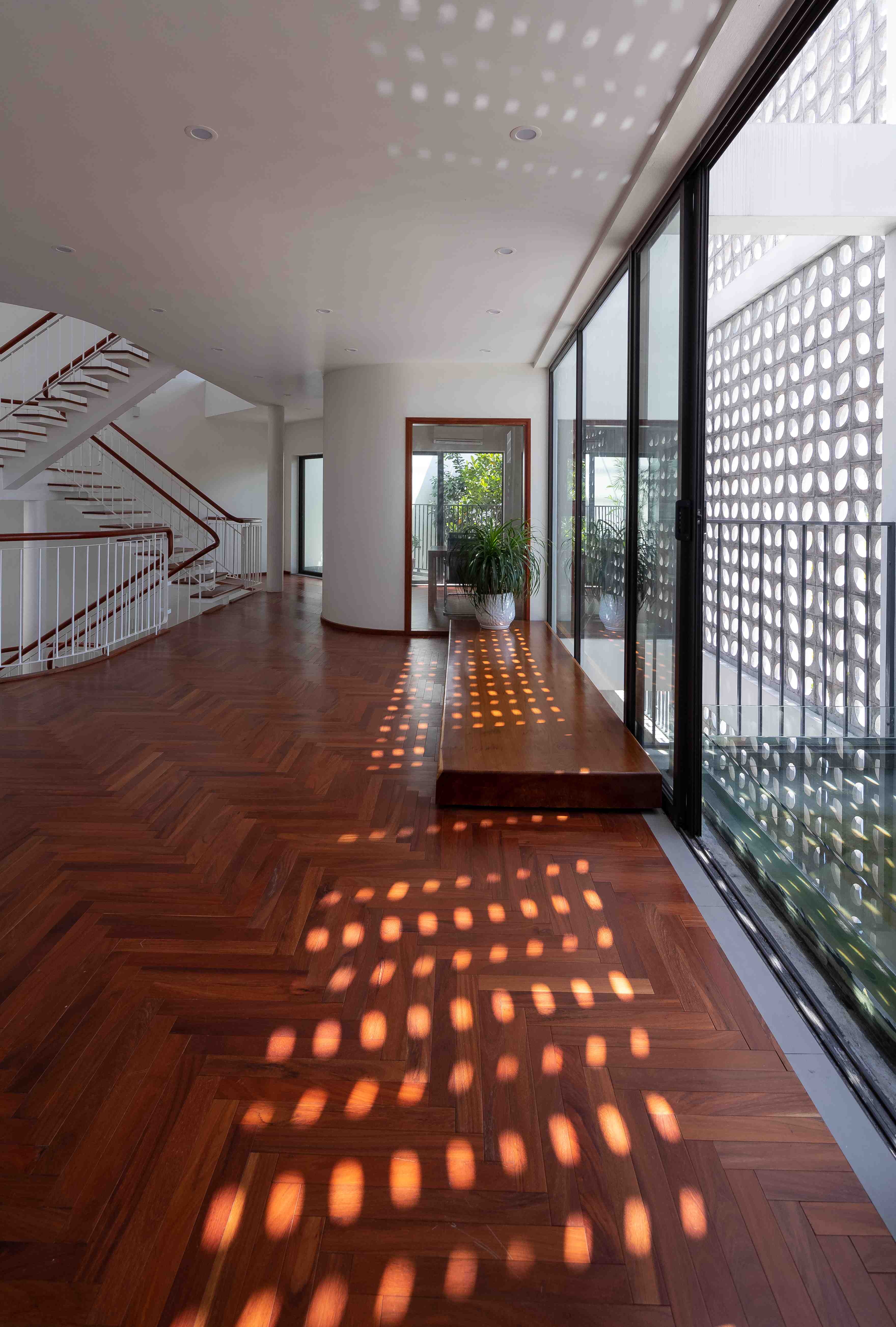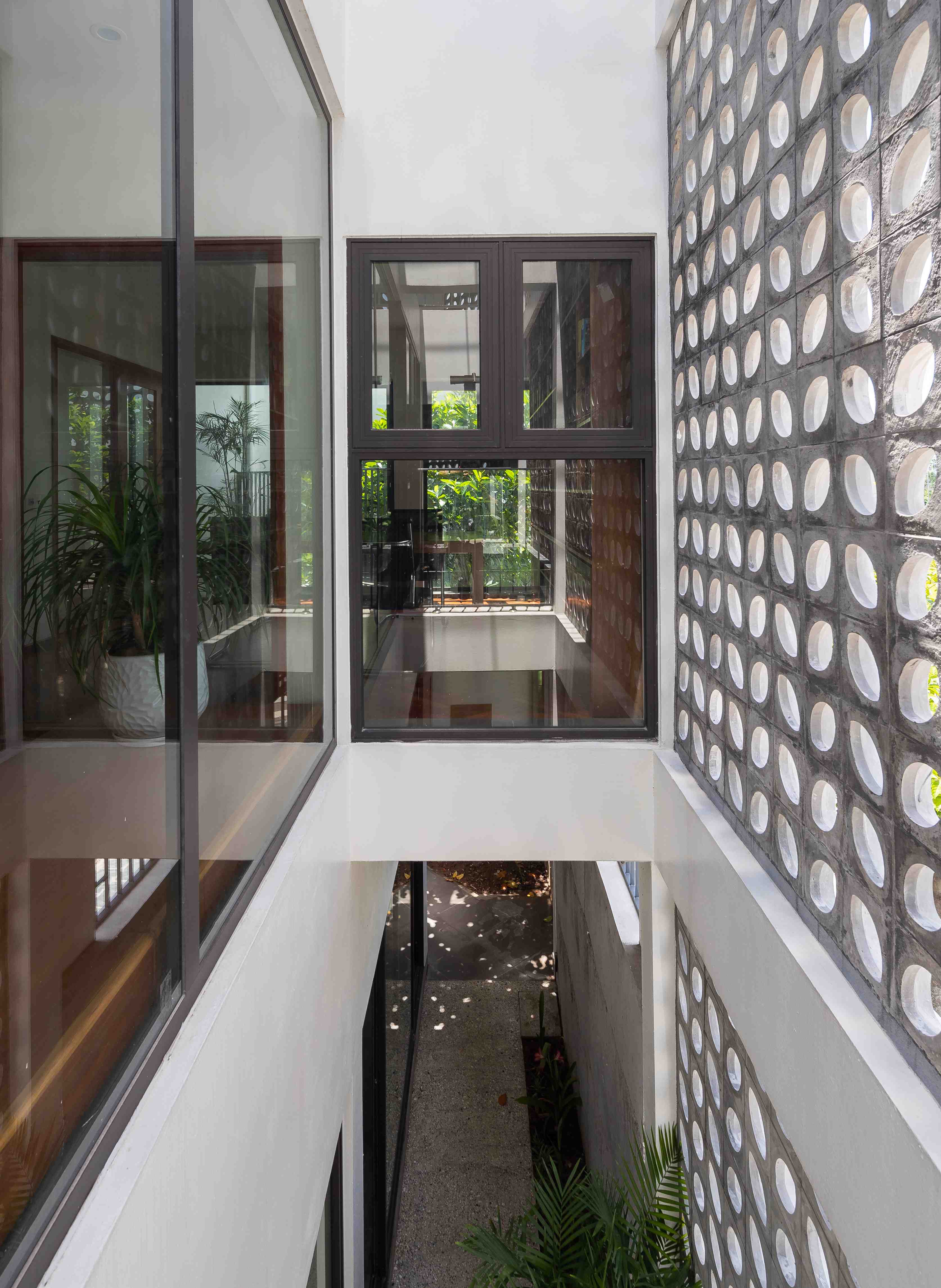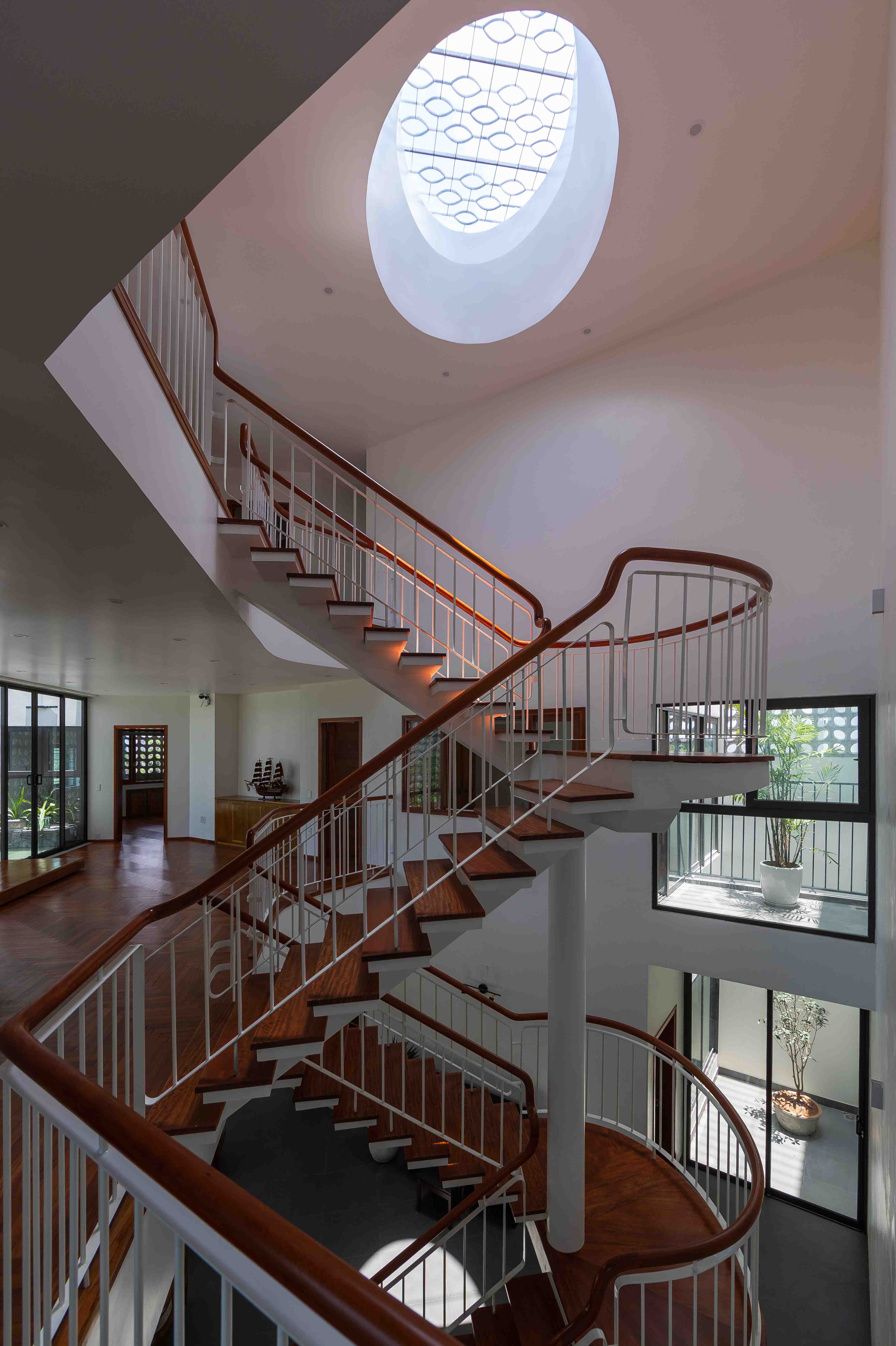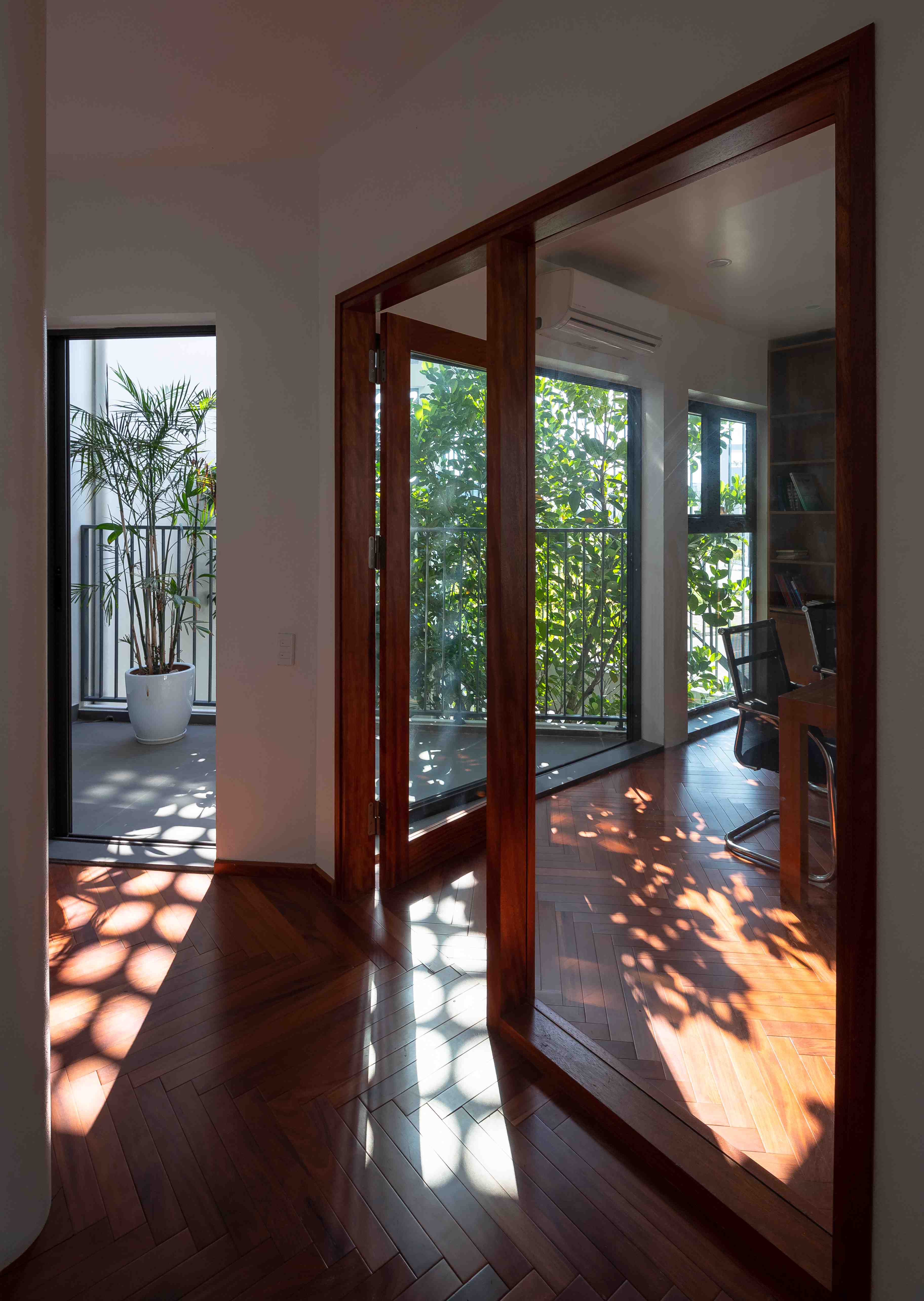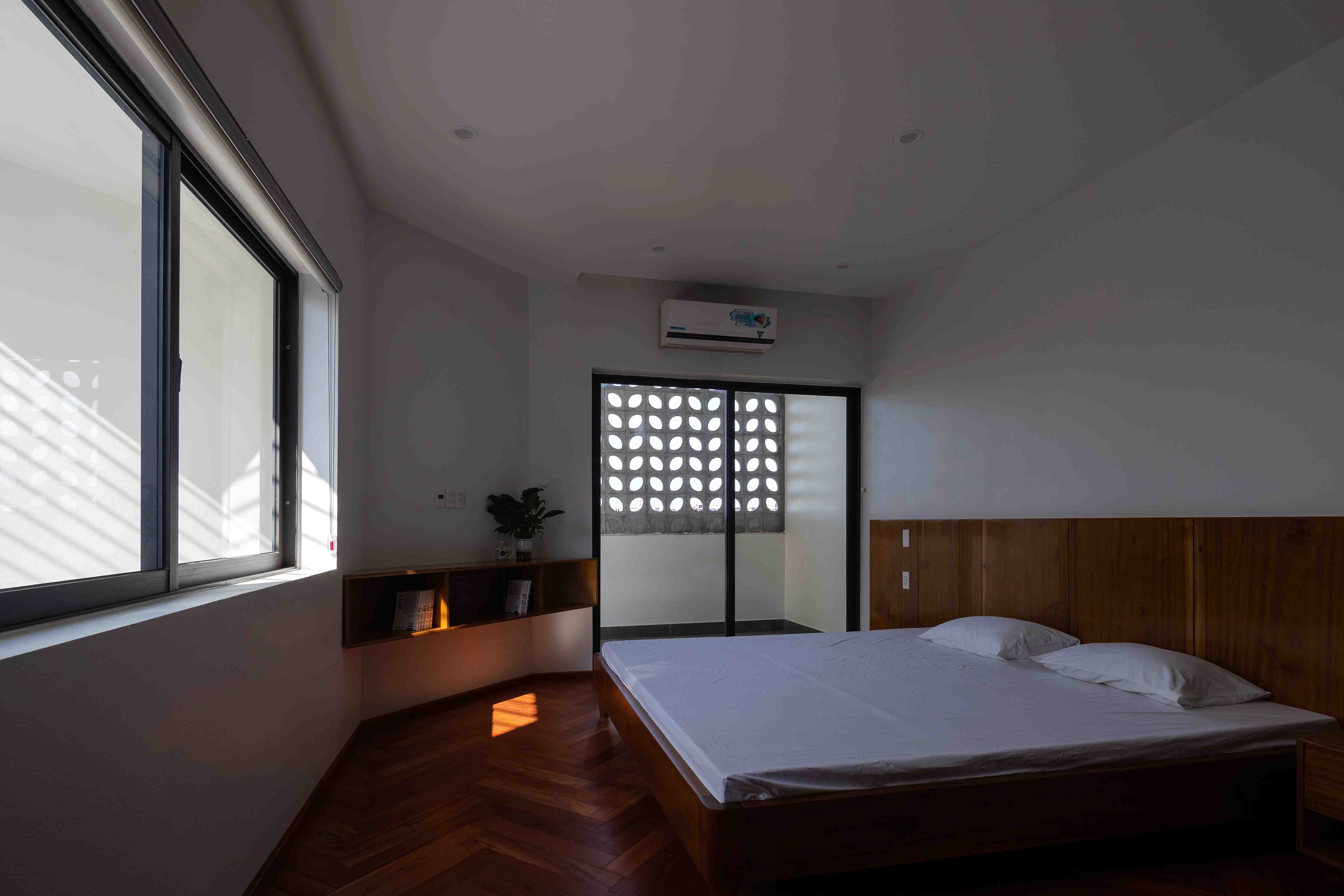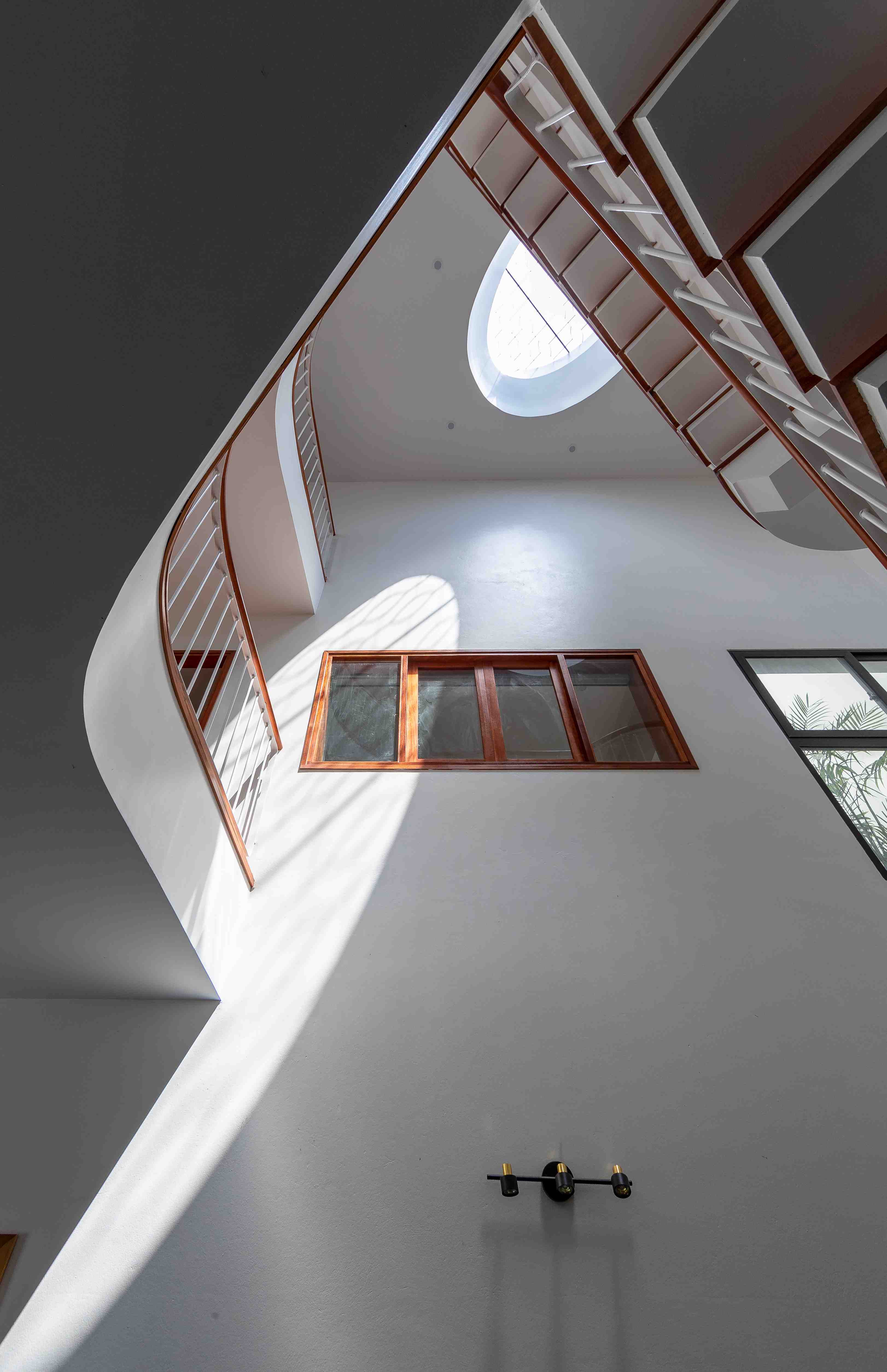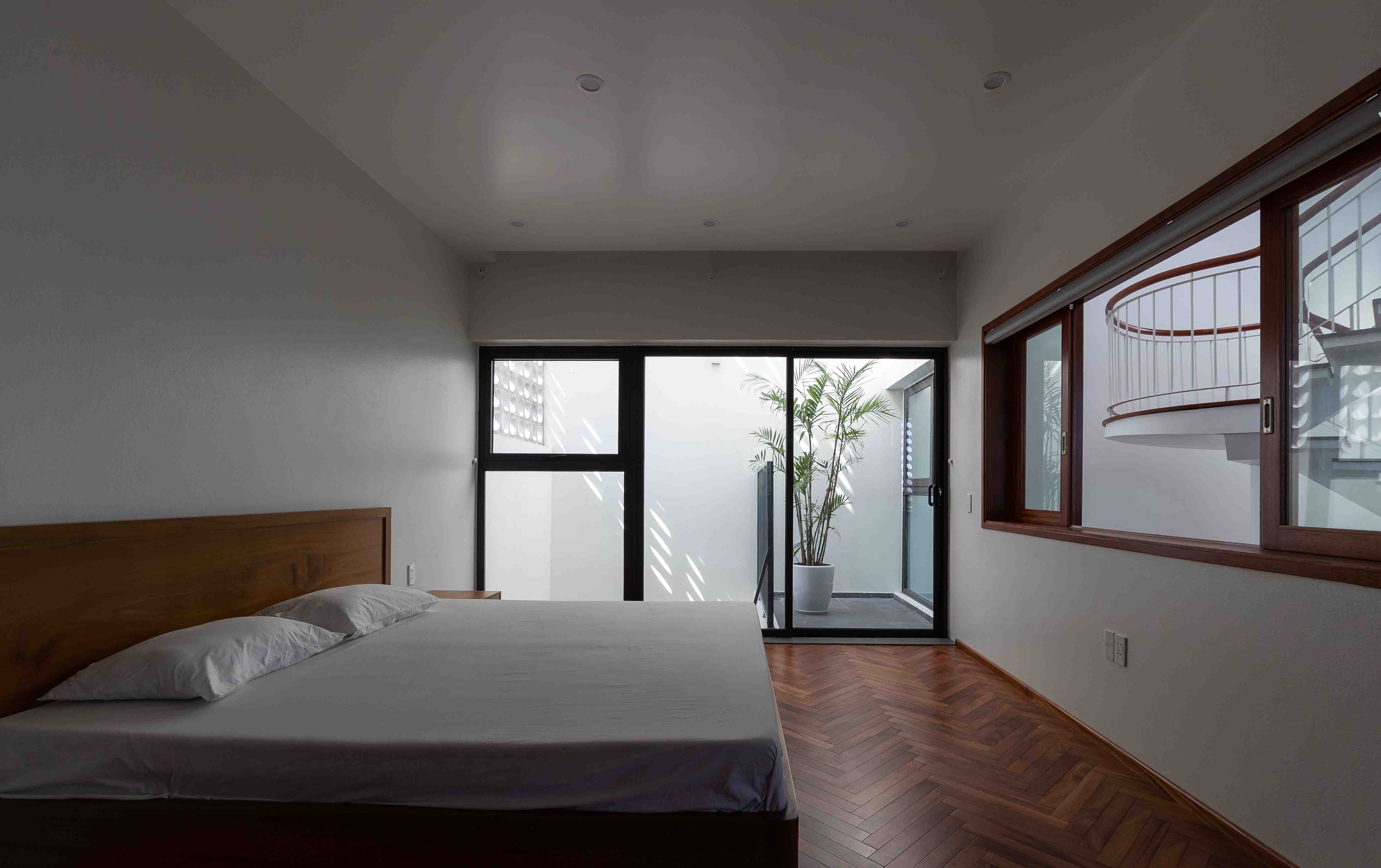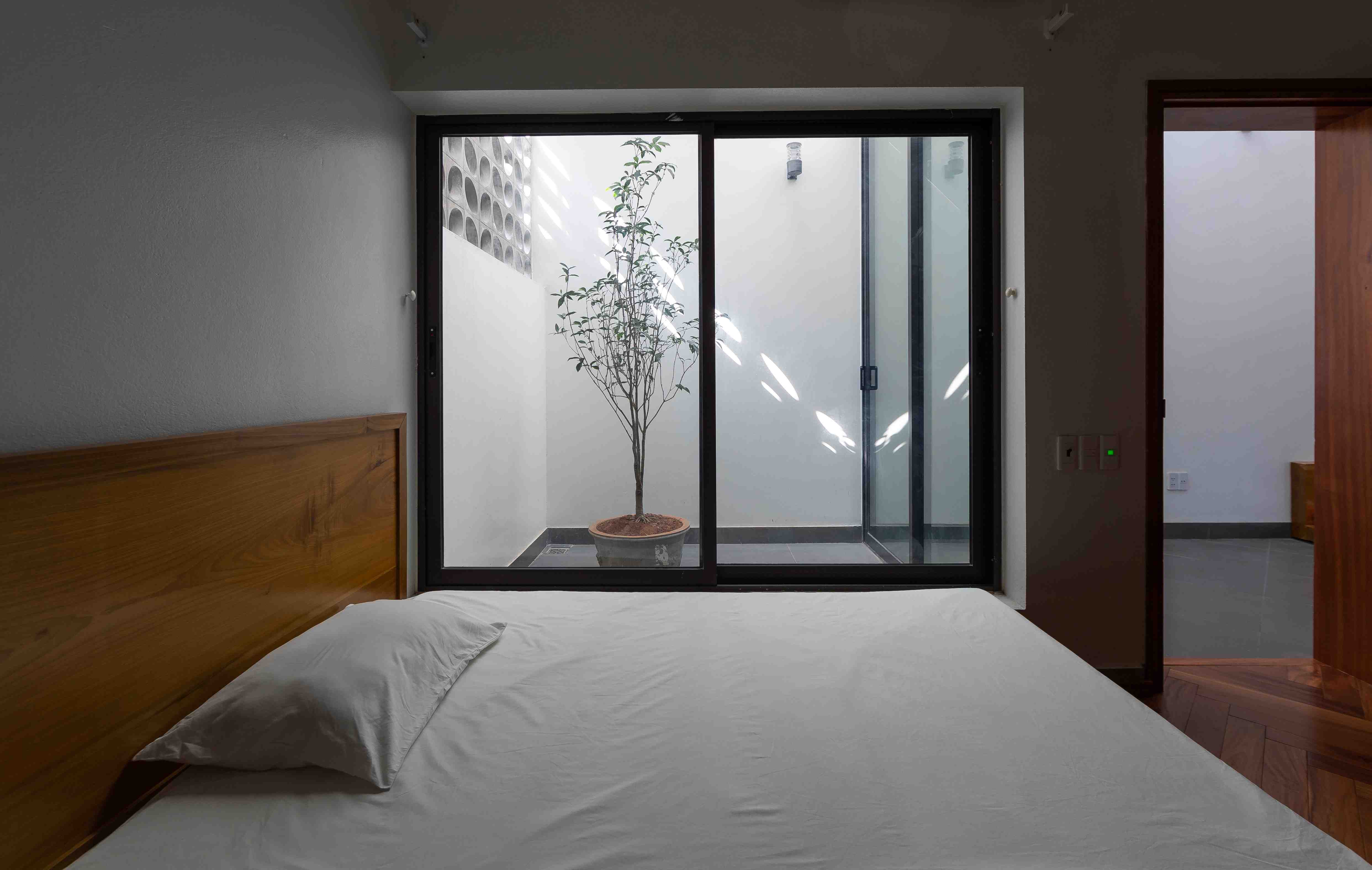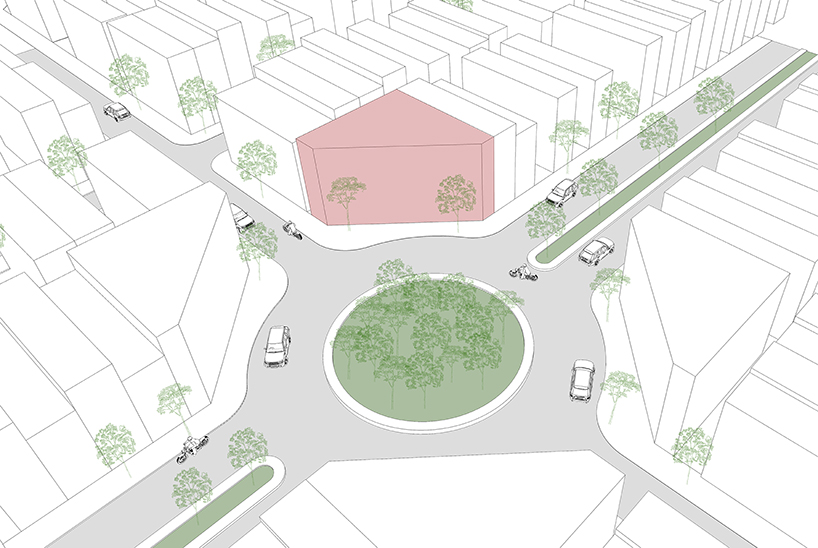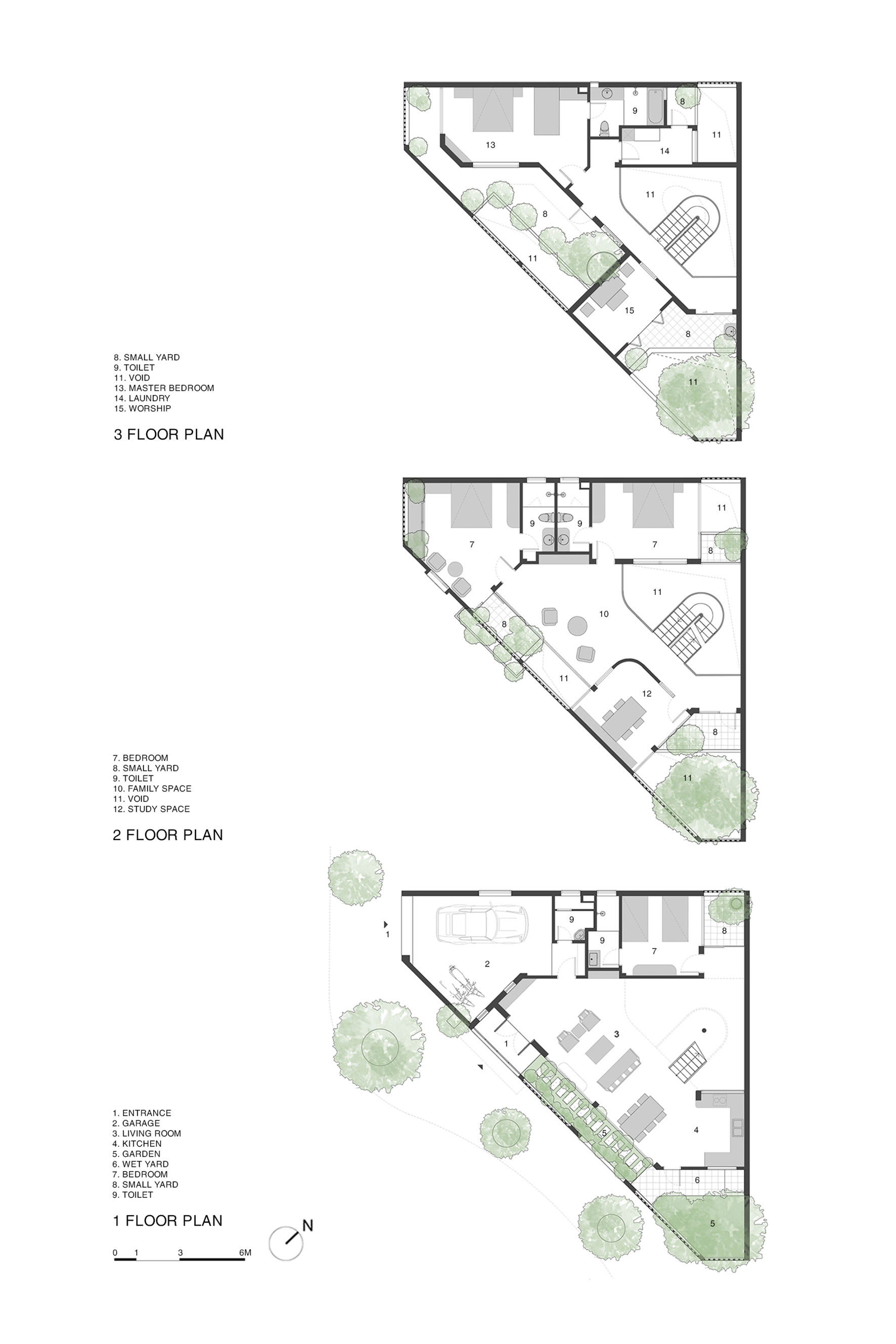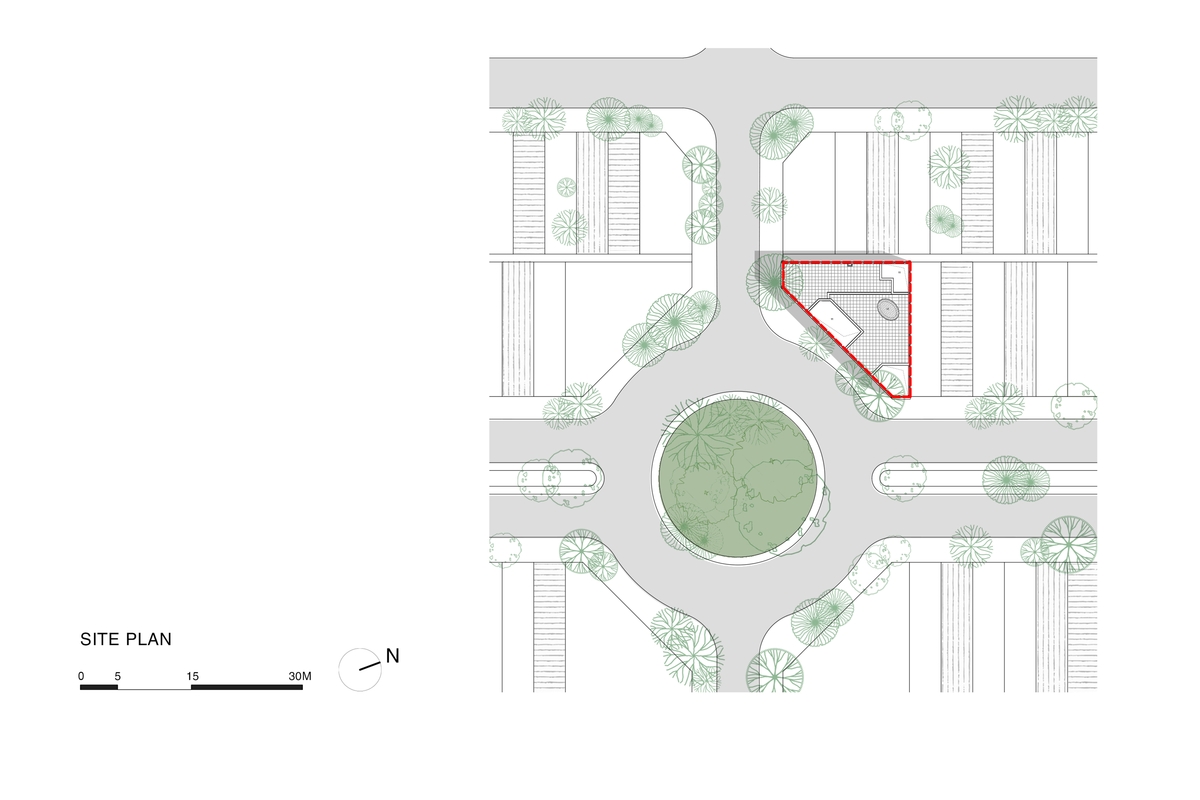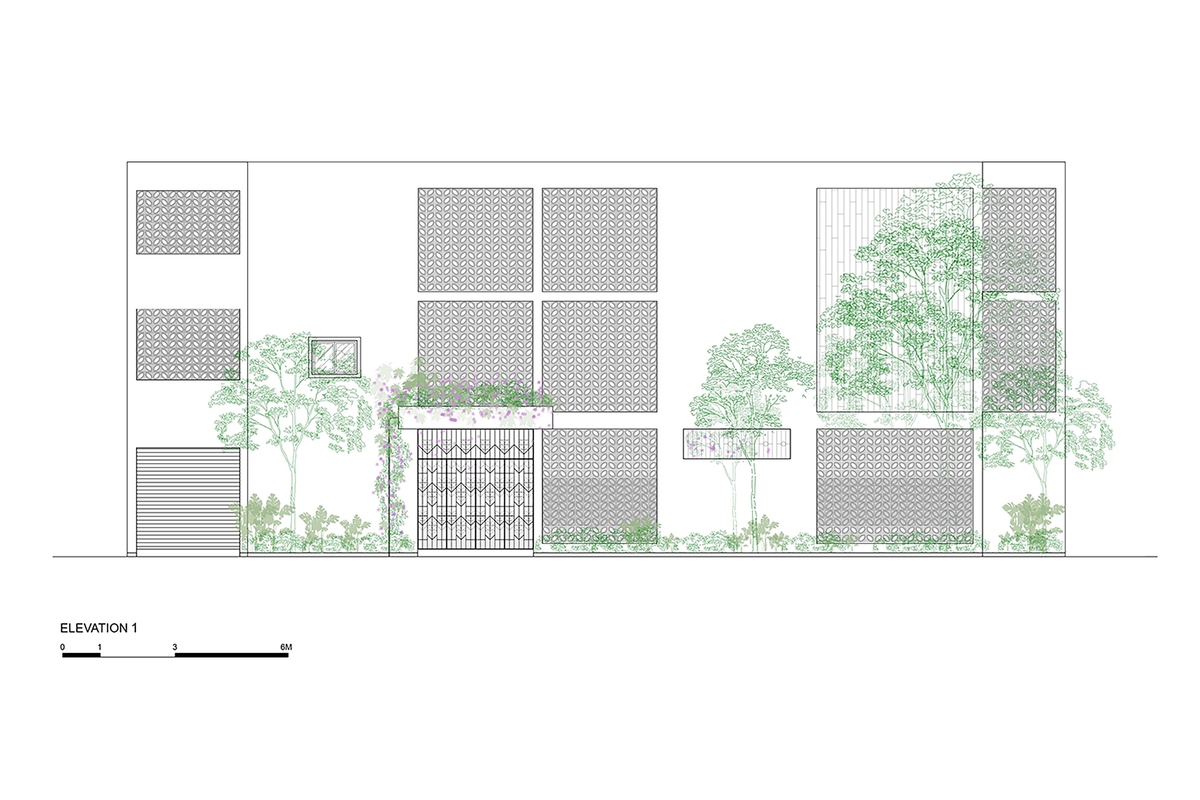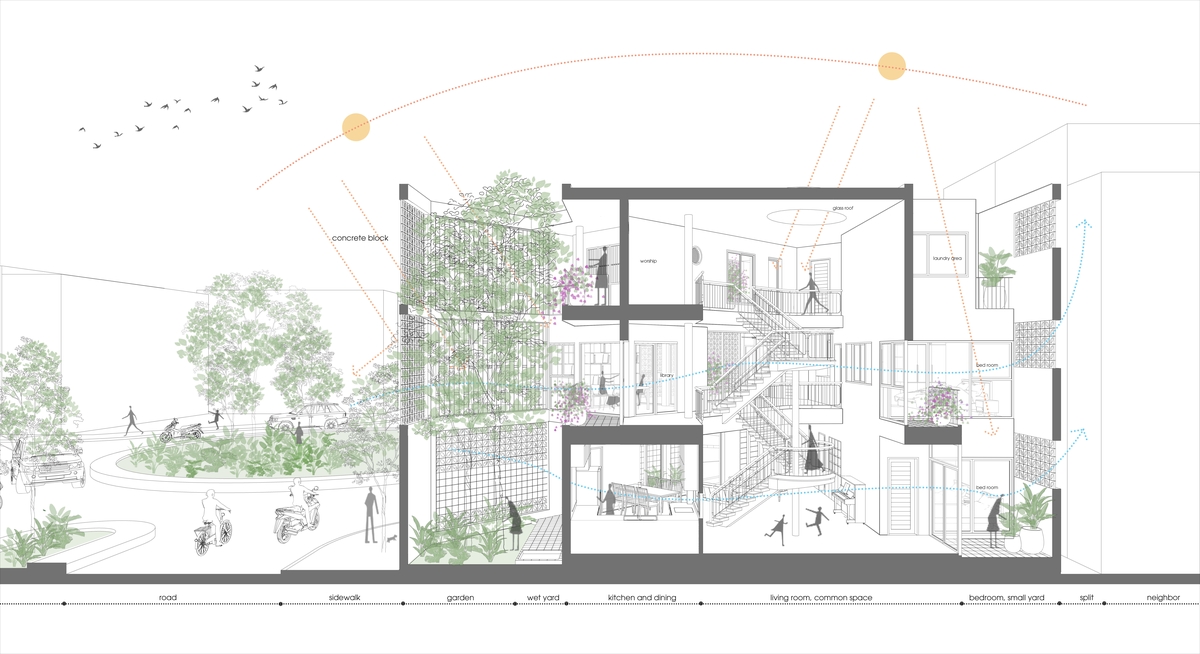Bung Binh House - Thai Binh Province
BUNG BINH HOUSE
Design: NH Village Architects
Design team: Tran Dai Nghia (Chief), Nguyen Phuong Hieu, Hoang Trung Hieu
Location: Thai Binh City, Thai Binh Province, Vietnam
Land area: 170 m2
Total construction floor area : 450 m2
Year: 2022
Photography: Trieu Chien
The site is characterized by a triangular shape located at the corner of a traffic roundabout in a new urban area at Thai Binh province - a region famous for rice cultivation in the North of Vietnam. This place is predicted to increase traffic density. The family consists of 3 generations: grandparents, parents, 2 young children.
The challenge with the design was to create an urban living space that takes advantage of nature elements while still ensuring privacy in the triangular shape and location of the site. The solution was to create a buffer space between the outside and the living space inside the double skin façade system consisting of 2 layers: the outer concrete block brick layer to block the view with security functions and an atrium and garden space. The living spaces are pushed back to the inside to avoid the direct influence of traffic and solar radiation on the facade.
The concrete block system has a hollow section that simulates the 3-D shape of a grain of rice, a figure inspired by the pride of the region as a major part of Vietnam's rice production area. The block has a 3D grain-shaped concave and is stacked together to create a facade. Blocks have 2 types: solid and hollow, the blocks are arranged in appropriate positions on the facade to get wind, light, and block the view from outside in accordance with the function of the interior spaces.
Day and night light penetrates through these voids and casts shadows around the surroundings, creating the image of a garden of rice grains imprinted in space, moving according to the time of day and the different seasons during the year. Experience with this shimmering dynamic garden will create positive emotions and energy for the family every day.
A corner of the triangular atrium garden is created in connection with the kitchen area on the first floor; the garden can be accessed through a long narrow space buffer corridor without going into the house. Thus, the space of the kitchen, dining, and guests has an open and airy feeling from the inside. This buffer space is also a place for air convection to both protect and cool the interior space. The 2nd and 3rd floors have balconies overlooking the garden, where the family can relax.
The space used inside is planned to ensure communication between family members and the connection with the surrounding green space and garden. Stairs are arranged in the inner atrium. On the 2nd floor, the common space is like a small open library in contact with the garden and buffer space, where the family can study and work. The private bedrooms are arranged mainly on the 2nd and 3rd floors, interspersed with small courtyards. The front-facing bedrooms are arranged with another layer of doors inside the concrete Block layer, creating a sense of security. and ensure proper ventilation and natural light in the room.
A skylight with a glass roof is placed in the middle of the house to ensure that the interior spaces are always bright enough. The stairs connecting the floors are in this atrium space, connecting the common spaces from the 1st floor to the 3rd floor.
The work has been introduced in prestigious magazines in the world and in Vietnam:
https://ashui.com/mag/duan/tu-van-thiet-ke/18816-nha-bung-binh-thiet-ke-nh-village-architects.html
